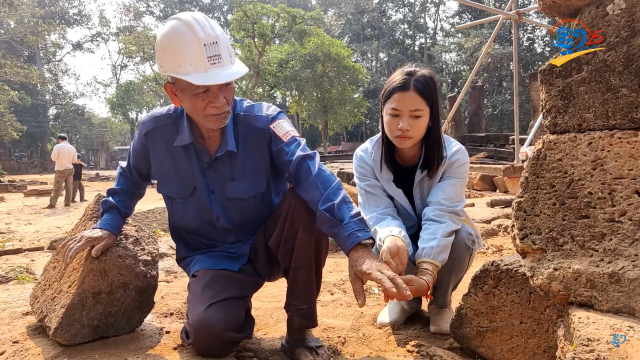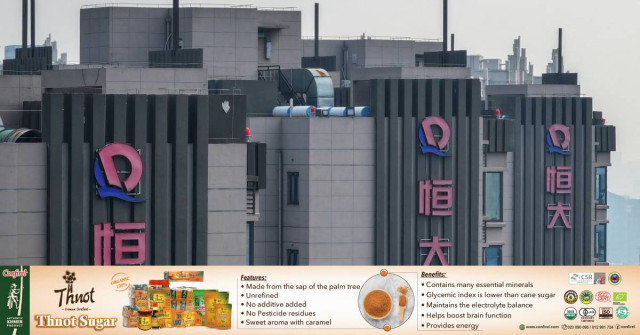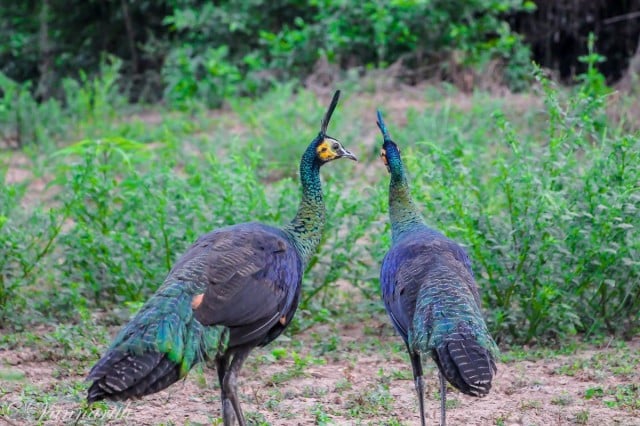A 71-Year-Old Temple Restorer: The Young Walks Fast, the Old Knows the Way

- By Heng Sreylin
- June 7, 2023 3:00 PM
SIEM REAP - Since 1994, the Apsara National Authority has been ongoingly conducting restoration work on the Preah Ko temple, a Hindu monastery located fairly close to Siem Reap city.
As scaffolding is installed and work is being done, the structural integrity of the temple is getting better and the monument stronger as days pass on.
Heavily damaged due to the forces of nature and the passage of time—the monument is more than 1,000 years old—around five restoration workers can be seen actively involved in the process of restoring the corridor at the front of the temple.
_1686112255.png)
Throughout the day, workers must track down and replace in their original locations stone fragments whose shapes were damaged, this task adding an extra layer of difficulty to the process.
Restoring ancient monuments does present a unique challenge of its own. New and advanced technologies can make work much easier than before. However, a balance must be struck between making an ancient structure as strong and stable as it can be while remaining the original monument it is, and giving visitors the sense of seeing a unique, age-old temple.
_1686112332.png)
At the restoration site of Preah Ko, after being briefed on the plan for the day, work begins at 7:30 a.m. in the morning. Formulating the work requires a certain number of restoration workers mixing mortars, cleaning the stones or gathering fragments that lie on or below ground. Similar work patterns are being repeated until the work shift comes to an end at 5 p.m. as the sun almost begins to set.
A sense of cross-generational work can be observed here as Soem Ouem, the eldest person of the team, still puts on his blue uniform and makes his way to the restoration site. At the age of 71 at the time of the interview, Ouem was born in a time when Cambodia was more or less still a French colony, part of Indochina.
_1686112423.png)
Pointing at a cracked portion of a stone, Ouem explains that the area must be cleaned of dirt before a special glue can be applied to bond the two parts together. Then, mortar will be applied over the crack to stop water from sipping and plants from growing inside. “If the inner stone becomes very decayed, we can replace it.
“However, the outer stone should remain as it is.” he explained. “We have to be very careful. Mortar must be applied thoroughly to protect insects from coming inside as they can bring in plant materials, which may grow from within.”
_1686112526.png)
Work is assigned in relation to age and energy. Stronger restoration workers are tasked with lifting heavier stone blocks or mixing mortar as well as training. Meanwhile, the older workers and experts are in charge of checking and assembling stones fragments based on damaged noted.
Sim Oeum was born in Ovlok, a village of Siem Reap Province’s Bakong district that is not too distant from Preah Ko temple. He spends his days removing dirt from stone fragments and yet, he never tires of his job, never even gets exhausted or sick. His goal is to accomplish his duty as part of his heritage.
_1686112631.png)
“I never get tired with this job even if sometimes I lack strength or I get sick, but I never think of quitting this job,” he said. “I believe that [these temples] are crucial elements of our national identity and that we have the responsibility to help protect them.”
Preah Ko, which literally translates as “sacred bull,” is a Hindu monument built in 879 during the reign of King Indravarman I. Dedicated to Shiva as well as the king’s relatives, the temple was part of the ancient capital of the empire Hariharalaya (today Roluos) along with a number of temples nearby such as the temples of Lolei and Bakong.
_1686112709.png)
Written in Khmer for ThmeyThmey News, this story was translated by Luy Serey Reaksa for Cambodianess News.
Watch the video in Khmer:















